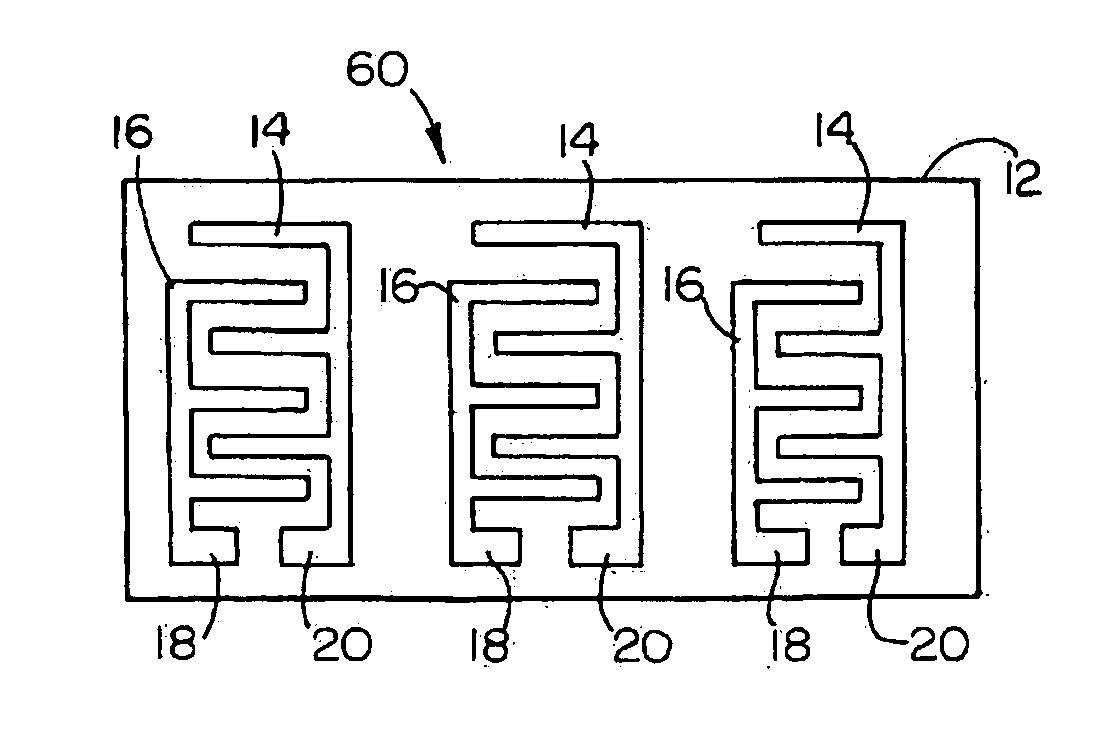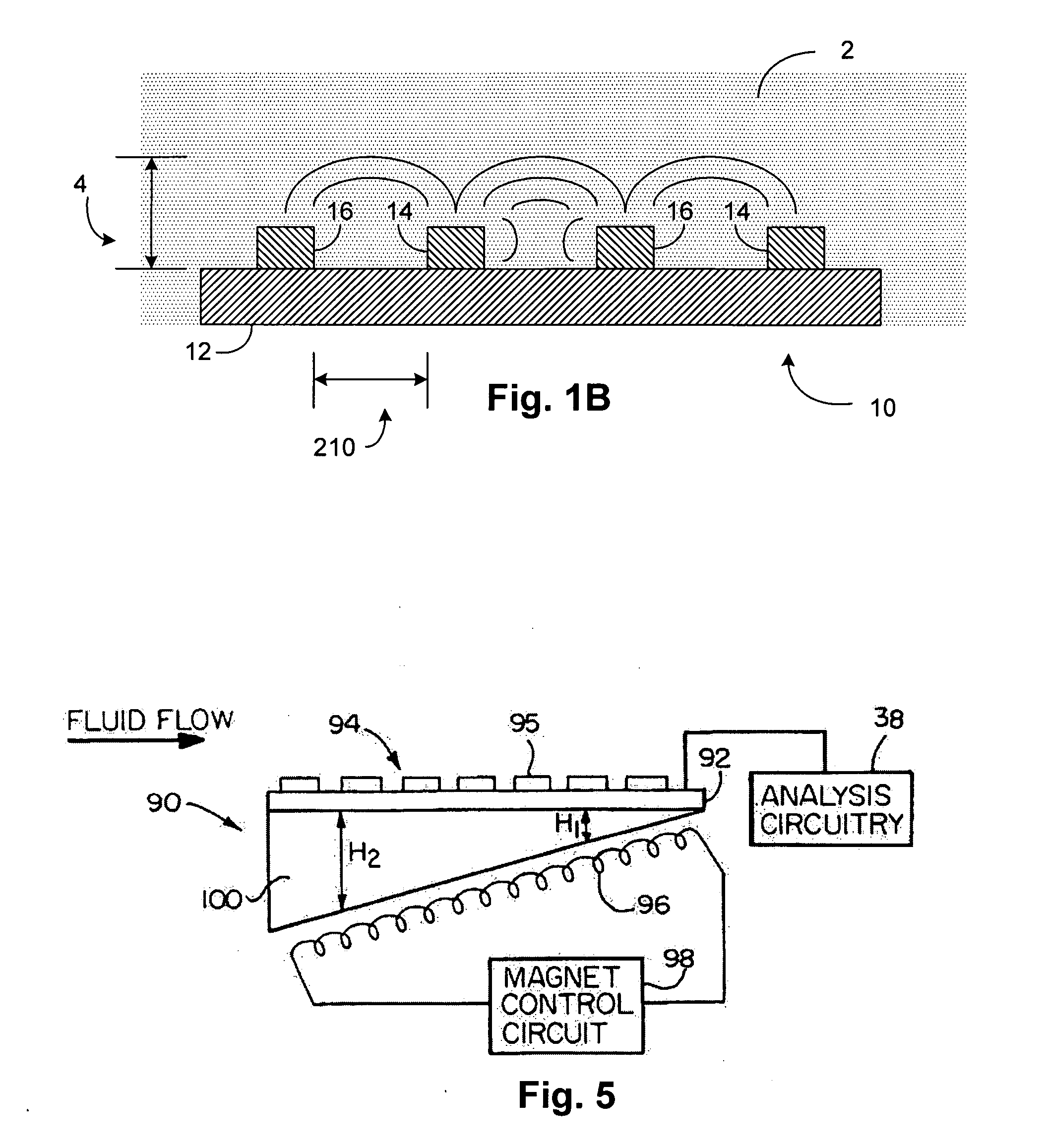MEMS-based sensor for lubricant analysis
a sensor and lubricant technology, applied in the field of apparatus and methods for analyzing fluids, can solve the problems of unnecessary or accelerated wear of lubricated components, sensor is large and bulky, and it is difficult to move from machine to machine to make fluid contamination measurements
- Summary
- Abstract
- Description
- Claims
- Application Information
AI Technical Summary
Benefits of technology
Problems solved by technology
Method used
Image
Examples
Embodiment Construction
[0043] The present invention will now be described with reference to the drawings wherein like reference numerals are used to refer to like elements throughout. As will become more apparent based on the following description, a fluid contamination analyzer for monitoring contaminants in lubricating fluids utilizes micro-electromechanical (MEMS)-based sensors, thereby substantially reducing the sensor dimensions while providing a similar electrical response. This results in a greater variety of machine fluid analysis applications for the sensor. The MEMS-based sensor fabrication techniques also allow for a substantial reduction in sensor costs and provide high sensor manufacturability. Such fabrication techniques also allow for a substantial number of sensor variations with a sensor array for collecting a variety of types of data relating to fluid contamination.
[0044] Throughout the disclosure, reference will be made to impedance and impedance measurements. Impedance can be represen...
PUM
| Property | Measurement | Unit |
|---|---|---|
| thick | aaaaa | aaaaa |
| width | aaaaa | aaaaa |
| thick | aaaaa | aaaaa |
Abstract
Description
Claims
Application Information
 Login to View More
Login to View More - R&D
- Intellectual Property
- Life Sciences
- Materials
- Tech Scout
- Unparalleled Data Quality
- Higher Quality Content
- 60% Fewer Hallucinations
Browse by: Latest US Patents, China's latest patents, Technical Efficacy Thesaurus, Application Domain, Technology Topic, Popular Technical Reports.
© 2025 PatSnap. All rights reserved.Legal|Privacy policy|Modern Slavery Act Transparency Statement|Sitemap|About US| Contact US: help@patsnap.com



